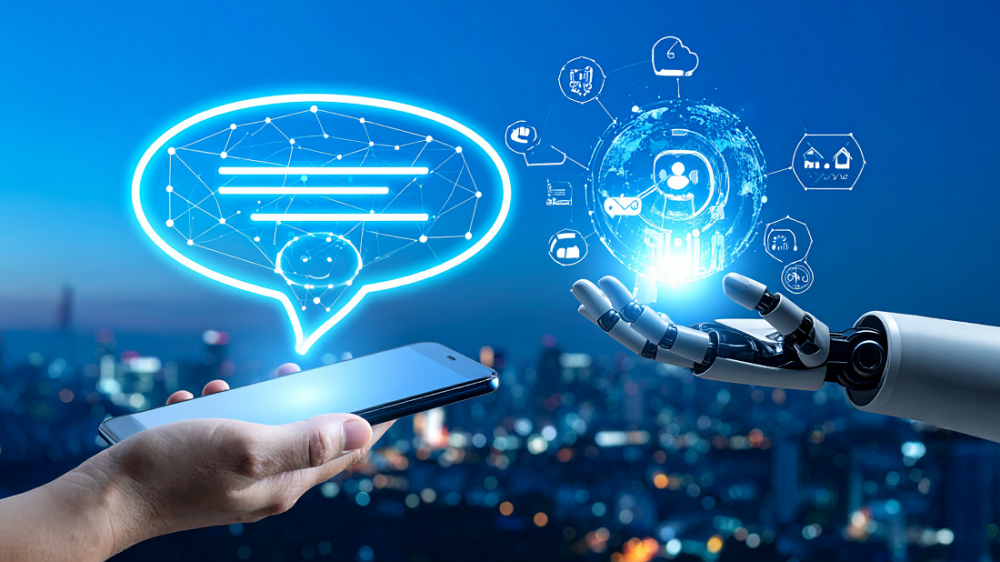Since OpenAI launched ChatGPT in November 2022, The netizens and tech aficionados have adopted chatbots on a massive scale. Anthropic, another startup from San-Francisco came up with Claude. Coincidentally the founders are ex-Open AI.and Claude is giving tough competition to Open AI. AI Chatbot leverages an LLM that delivers text output based on user prompt. Google the search giant started with Bard, but faced backlash. It has now emerged victorious with its Gemini line of Chatbots and what once felt like a sunken ship, Google is now a cruiser.
Perplexity – another silicon valley startup develops its own model – Sonar as well as hosts other models as well for its chatbot. DeepSeek, A company from China launched its Chatbot in January and took the world by storm by its advanced thinking and deep research abilities. This all at the fraction of finetuning cost. All its American rivals quickly pivoted and added deep research and advanced thinking capabilities to retain users.This disruption has created a Generative AI wave . This wave has transcended from text to image, then to audio and to video and now to browser based workflow orchestration.
AI Chatbots have fundamentally challenged Google’s Search Dominance. People used to search their query on search engines and got a list of website links related to the query. Google is dominating this game with competition left to dust. AI Chatbots said enough of options, let’s be specific and give users only what they want – compressed, synthesized and retrieved from the web and presented in the form of paragraphs. AI Chatbots act as a companion to users- Think of a friend that gives you the best feedback without beating a bush- Straight to the point.
How AI Chatbots Work?
OpenAI’s ChatGPT has reached a massive user adoption point followed by Perplexity and then Anthropic’s Claude..These Chatbots use attribution graphs on user prompts and generate answers in the form of text. Here users can ask followup questions and chatbot with its context window capability will give effective feedback to the follow-up. These Chatbots work like your favourite Messenger Apps but the only difference is that in the case of Chatbots, the recipient is a LLM that throws the reply.
Chatbots need Data for prompt reply, So the companies building chatbots train LLM’s over statistics based machine learning and deep learning algorithms and feed data as per proper labelling and context. The companies have massive GPU clusters that run these algorithms at lightning speeds and are the backbone for any LLM based Chatbot. Concepts such as Retrieval Augmented Generation come into play when generating text output based on each element/word of the prompt. AI Chatbots leverage Natural Language Processing (NLP) Principles and LLM mechanism and converse to user prompts.
How to optimize LLM?
To optimize a LLM for any specific function there are two ways – One is Prompt Engineering – users sharpen their prompt (NLP Input) with minutest details and extract the best out of LLM. The Second is fine tuning, which is expensive as it involves scaling of GPUs. Prompt Engineering is resource efficient, time saving and cost effective in generating exact response for user prompts. Based on the context, Chatbot gives what the user is looking for. Users get exactly what they expect. Just like Bravo’s WYSIWYG concept, Chatbot acts on WYPIWYG – What You Prompt Is What You Get. Succinct, Precise, Concise reply covering all the aspects of your prompt.
Thus a Chatbot responds to user prompts, prompts can be of multiple sentences, can include examples, can have hints as well as respond with a single, structured answer that fits precisely what the user is expecting.
Which Chatbots are currently ruling the market?
The Chatbot market – can be compared to early browser and search engine markets. The War of Browsers , Internet Explorer versus Netscape Navigator – two of the famous Browsers before Google Chrome’s ultimate supremacy. OpenAI’s ChatGPT is highly used for basic question answer flow. Anthropic’s Claude is developers favourite – It is best suited for coding and software development related prompts and gives detailed code breakdown.Perplexity claims to challenge Google openly for its Search product. It seems that Perplexity’s sole aim is to beat Google at its Search game by integrating shopping, financial analysis and other aspects into its product..China’s Deepseek and France’s Mistral are also competing for the same crown . Lets see which Giants absorb the search engines and remain relevant at the forefront of the internet.
What are AI Agents and are they related to LLM based Chatbots?
Workflow Automation landscape before the Generative AI wave involved companies such as Zapier, Make, n8n. They donned the hat of Robotic Process Automation (RPA) Softwares. They executed a workflow based completely out of repetition and human logic and connected over apps via the API’s.
Then came the open sourced LLM’s and the rise of Agentic AI began. Langchain, LlamaIndex, and other frameworks like Crew AI are becoming the core infrastructure for Agents. OpenAI has its CUA -Computer Use Agent along with its Operator Product that does agentic browsing and task completion on user behalf. Anthropic came up with Claude Computer Use to do agentic browsing and task completion. Antropic is also credited for introducing MCP – The Gold Standard for Agentic AI connectivity. Antropic’s Claude Code Agent has a separate fan base amongst the coding community for its agentic code generation capabilities with accuracy.
Task orchestration agents follow a drag and drop approach where nodes are connected and triggered through a particular trigger node to start a workflow. The second approach is a fully prompt based approach where the user prompts his task desired output and agent along with its LLM based knowledge seeks to achieve the desired action and attain to a result. Some examples for prompts are -Book the Cheapest Flight from New York to Chicago. Here the agent will act on your behalf, summon the browser and will fulfill your request navigating the complex internet on its own knowledge. This is a typical example of Agentic Workflow.
Category of AI Agents
Where there is very little requirement of humans in loop for supervision. Typically these prompt based browser agents rely on OpenAI CUA and Anthropic’s Computer Use and Browser Use as its infrastructure. The best AI Agent is from the stable of Perplexity – called a Comet. It acts as an Agentic Browser that browses and executes as per prompt all within its interface. Google has also launched Project Mariner based on Gemini, although available for US users only
There is also a second category of AI agents that reside in IDEs that do Vibe Coding. Prompt the way to get your desired frontend and backend architecture in your favorite tech stack. Cursor, Windsurf are the go to options for this. Tech giants like Microsoft have their own GitHub Co-pilot that does the code generation heavy lifting. Amazon has come up with Kiro. These Agentic IDE platforms streamline code generation and deployment with ease and have seen massive numbers in adoption across enterprises. These AI agents are completely based on an LLM layer and use it for knowledge retrieval and extraction purposes.
There is also a second layer to agentic vibe coding agents in the form of fully prompt based output driven UI generators. Examples to this are v0, Lovable, Bolt etc.They create frontend UI segments and components and connect with backend and generate entire web applications through user prompting..Thus AI agents leverage LLM for knowledge retrieval and logical reasoning to execute tasks
Main Difference between AI Chatbot and AI Agent.
So, AI Chatbot acts as a Companion – It gives suggestions, feedback, and responses in the form of text. Whereas an AI Agent is your Co-pilot, Co-worker, Colleague. You delegate the task and it completes it. AI agent automates and executes menial and repetitive web actions. AI agents can handle Emailing,Code generation, Shopping and other complex enterprise execution such as CRM enrichment etc. On Enterprise level AI Chatbots have been implemented in Customer Service and Pre- Sales roles. Website Chatbots have leveraged LLM’s as they can condense entire knowledge of the website and present it when asked by a visitor. Enterprise use case of AI Agents is in Code Review, Code Generation and Deployment and also managing CI/CD Pipelines.
Conclusion:
AI has taken the world by Tsunami. The wave started with generative AI and now it has given rise to Agentic AI. The Chatbots offer advice, generate blogs – maybe this blog is written by AI Chatbot, gives recipes, drafts legal and business documents. AI agents take one step further- it takes action and executes a workflow.



